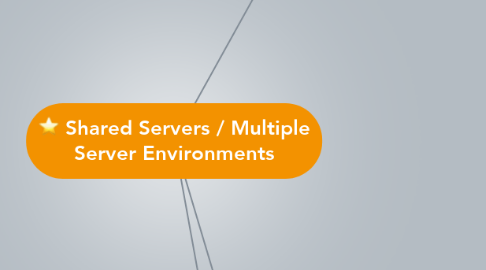
1. What are they used for?
1.1. 1.1 The Foundation > Understanding the basics
1.1.1. WDM Basics
1.1.2. WDM & Web Servers
1.1.3. WDM Cache
1.1.3.1. New node
1.1.4. Scalability and Load Balancing
1.1.5. Workforce Central /WDM using SSL terminator
1.2. 1.2 Why should I test in a multiple server environment ?
1.2.1. Most WDM customers are using a multiple server enviroment
1.2.2. A larger percent of our WDM issues have been related to Device Communication load in a multiple server enviroment
1.2.3. Always think "Test Bed" scenarios included with test cases
1.2.4. WDM GUI in a multi-server environment > Device Managers Behavoir
1.2.5. Think and test with multiple Instances, Instance Managment
1.2.6. Servers installed without WDM and BGP
1.3. 1.3 Planning and Understanding the install and setup of a Multiple Server Environment
1.3.1. Determine Project Approach, Stages and Steps
1.3.2. Estimate Project Duration
1.3.3. Establish Resource Requirements
1.3.4. Prepare Project Schedule and Budget
1.3.5. Prepare Work breakdown structure
1.3.6. Document Success Criteria
1.3.7. Review Project Schedule
1.4. 1.4 Customer Databases verus Stage
1.4.1. Identify Project Resources
1.4.2. Recruit Project Steering Committee
1.4.3. Recruit Project Coordinators
1.4.4. Identify / Recruit Key Stakeholders
1.4.5. Determine Training Requirements
1.4.6. Map the Project Organization Chart
1.4.7. Review Project Organization
1.5. 1.5 Debugging WDM
1.5.1. Establish Project Administration Procedures
1.5.2. Establish Quality Control Procedures
1.5.3. Establish Progress Control Procedures
1.5.4. Establish Change Control Procedures
1.5.5. Establish Issue Resolution Procedure
1.5.6. Review Project Control Procedures
1.6. 1.6 Troubleshooting WDM
1.6.1. Estimate Project Costs
1.6.2. Identify and Quantify Benefits
1.6.3. Determine Break-even Point
1.6.4. Analyze Risk
1.6.5. Review Business Case
1.7. 1.7 Device Simulator
1.7.1. Estimate Project Costs
1.7.2. Identify and Quantify Benefits
1.7.3. Determine Break-even Point
1.7.4. Analyze Risk
1.7.5. Review Business Case
2. How are they Accessed?
2.1. 2.1 Device Manager Security
2.1.1. Establish checkpoints
2.1.2. Acquire team resources for stage
2.1.3. Conduct stage kick-off meeting
2.2. 2.2 Data Collection
2.2.1. Determine Frequency of Meetings
2.2.2. Schedule Meetings
2.2.3. Brief Project Board
2.2.4. Prepare Meetings
2.2.5. Conduct Meetings
2.2.6. Follow-up Meeting
2.3. 2.3 Server Initiated Device Communications
2.3.1. Schedule Quality Review Meeting
2.3.2. Prepare for Quality Review Meeting
2.3.3. Conduct Quality Review Meeting
2.3.4. Follow-up Quality Review Meeting
2.4. 2.4 Device Initiated Device Communications
2.4.1. Update Project Schedule
2.4.2. Update Budget / Costs
2.4.3. Conduct Team Status Review
2.4.4. Create Status Report
2.5. 2.5 SmartViews
2.5.1. Request Changes
2.5.2. Identify Alternative Solutions
2.5.3. Conduct Steering Committee Meeting
2.5.4. Document Change Responses
2.5.5. Implement Change(s)
2.6. 2.6 Issues Management
2.6.1. Identify Project Issues
2.6.2. Assess Impact of Issues
2.6.3. Assign Resources
2.6.4. Resolve Issue
2.7. 2.7 Stage Closure Assessment
2.7.1. Determine Next Stage Tasks
2.7.2. Determine Task Dependencies
2.7.3. Estimate Effort
2.7.4. Allocate Resources
2.7.5. Prepare Next Stage Schedule
2.7.6. Prepare Next Stage Budget
2.7.7. Update Project Schedule
2.7.8. Update Project Budget
2.7.9. Review Business Case
2.7.10. Review Project Organization
2.7.11. Review Project Scope
2.7.12. Prepare Stage Assessment
2.7.13. Review Stage Assessment
2.7.14. Follow-Up Stage Assessment
2.7.15. Compile Stage Closure Report
3. Best Practices
3.1. 3.1 Best Practices for Optimal Workforce Central / WDM Performance
3.1.1. Prepare Product Evaluation
3.1.2. Conduct Product Evaluation
3.1.3. Initiate Maintenance Process
